The Impact of Discounts on Shopify Customer Lifetime Value

Discount Pricing as an E-commerce Sales Strategy
Throughout e-commerce, retailers use discounts to engage shoppers and drive purchases.
Discounts are everywhere, whether they’re in the form of new customer discounts, seasonal sales, BOGO deals, or loyalty rewards. And when used correctly, they can be a helpful tool for marketers.
To discuss discounts and their impact on e-commerce, our team spoke with Dr. Paul van Loon, Head of Analytics at Forecast, Tim Peckover, Content Marketing Manager at Smile, and Nick Cook, Marketing and Partnerships Lead at Verbal+Visual.

We asked them to cover the benefits and consequences of discounting and outline how to quantify the impact of discounts on the customer lifetime value of your Shopify business.
Table of Contents:
Before we get too far along, let’s cover some basics. First off is how to calculate percentage discount. Doing so will provide some context for our later analyses.
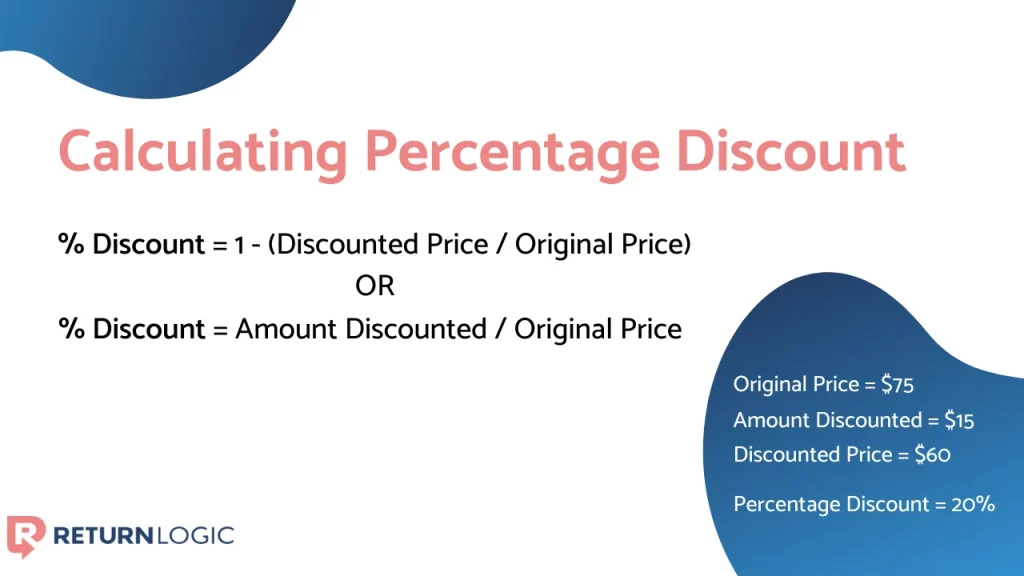
Now, let’s go through the typical benefits and consequences of discounting.
Benefits of Discounting
Discounts can be a powerful tool in e-commerce. Let’s walk through some of the common advantages and constructive uses of discounting.
Quick Customer Acquisition
When properly used, discounts can be a highly effective way to acquire new shoppers.
In fact, for one women’s fashion brand, just over 44% of shoppers had a discount on their first purchase. That means they acquired almost half of their customers during a discount event.
Effective Customer Retention
Customer retention is crucial throughout most of e-commerce.
The key to retention is repeated activity – getting shoppers to keep visiting your site and interacting with your brand.
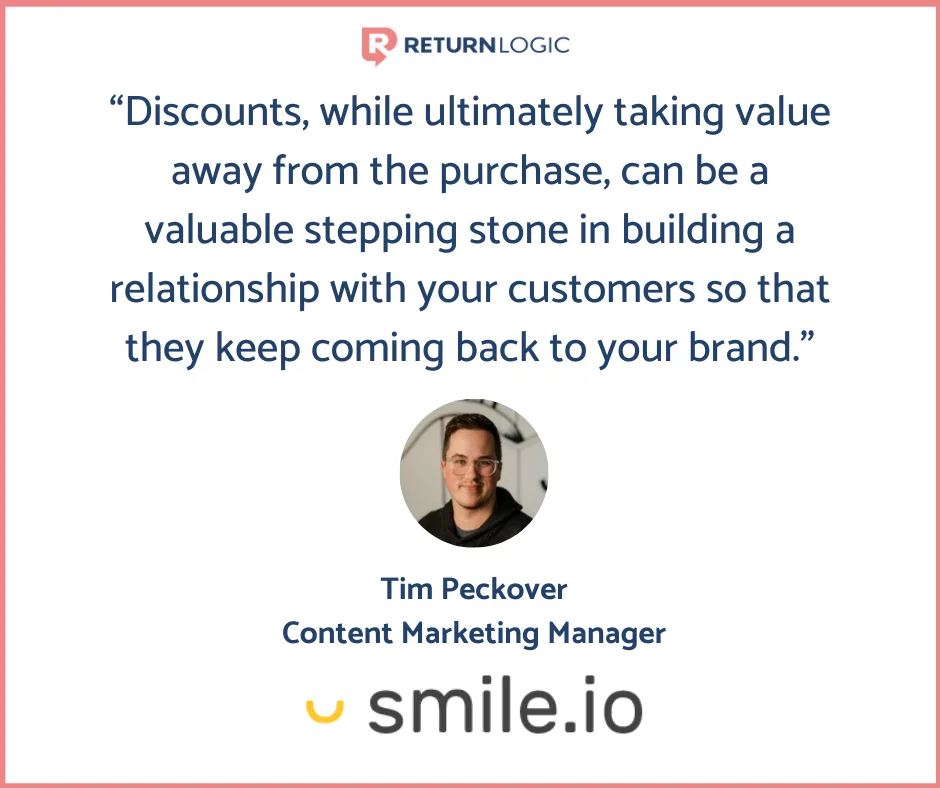
The biggest hurdle in retention is often driving repeat purchases from first-time buyers. When used discerningly, discounts can be an efficient way to stimulate repeat purchases from existing customers.
Short-Term Business Goals
Discounts are valuable for reaching intermediate goals like reducing excess inventory.
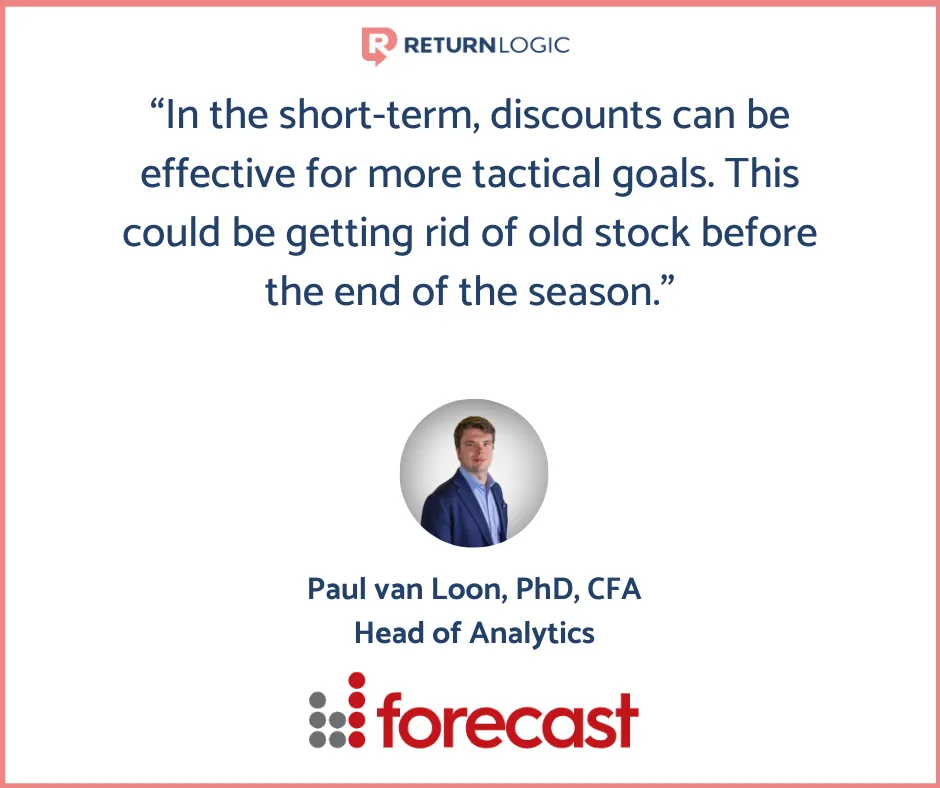
Inventory can make or break a merchant in e-commerce.
In addition to implementing inventory management software, retailers often hold end-of-season sales to help reduce leftover inventory.
While heavy discounts aren’t exactly ideal, they’re far preferable to a pile of excess inventory at the end of a season.
Big Picture Strategic Initiatives
Beyond smaller objectives, you can leverage discounts to achieve long-term strategic goals for your business.
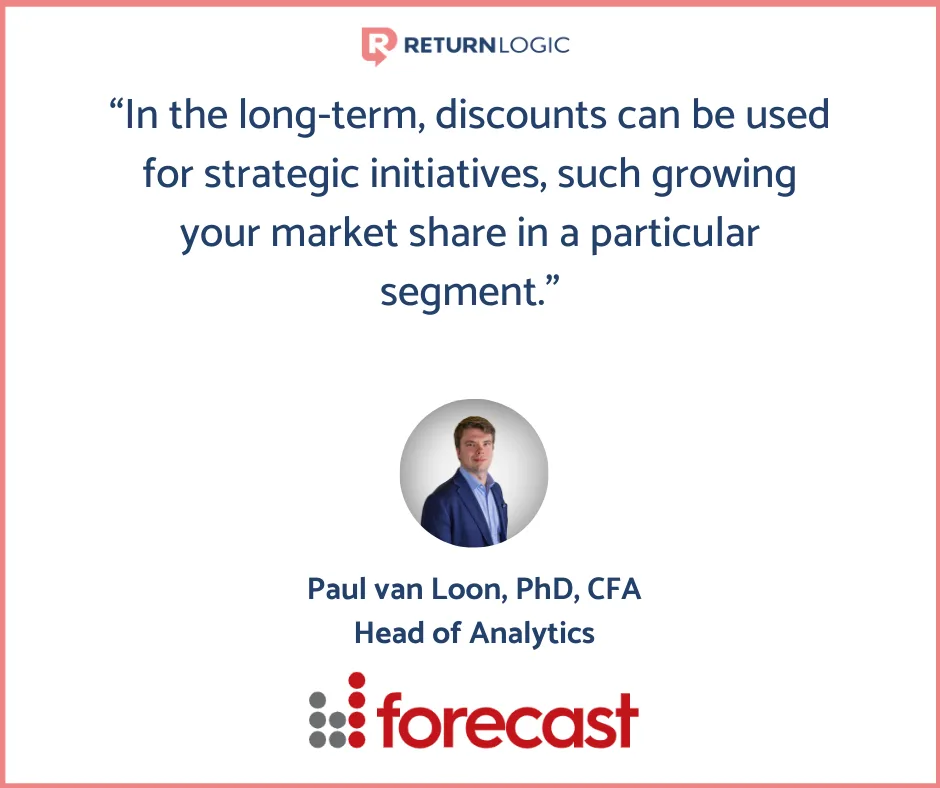
Discounted customer acquisition can help grow your customer base, test new markets, or gain shares in specific market segments.
But as we continue, it’s important to monitor and evaluate the profit potential of customer acquisition.
Consequences of Discounting
Nothing in life is free. While discounts can be a highly impactful tool, they certainly don’t come without costs.
Lower Profit Margin
At the most basic level, discounts inherently eat into your profit margin.
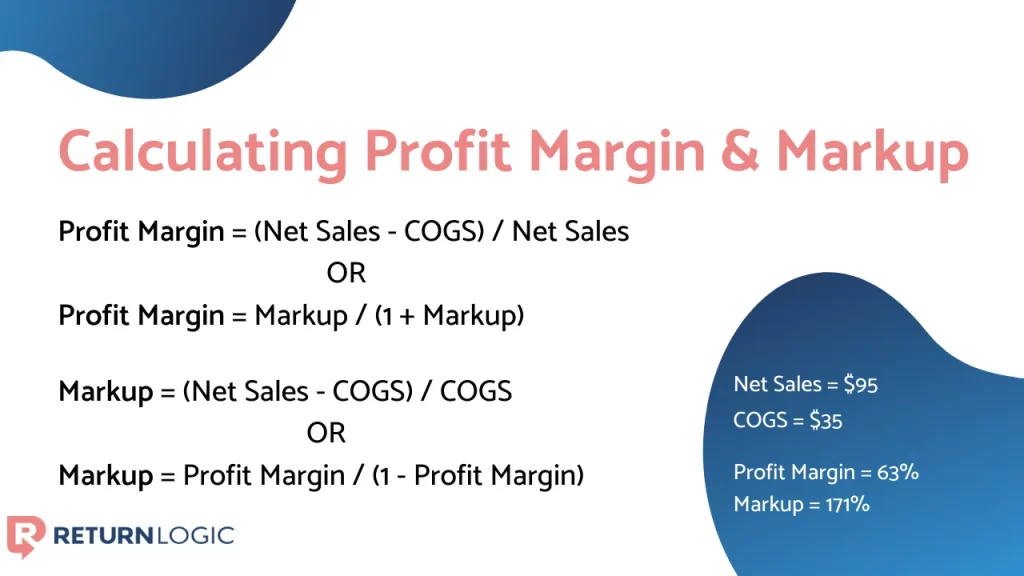
Retailers in many verticals can offer a 10% to 20% discount and still retain a reasonable margin on the purchase.
However, consider this in conjunction with other costs related to the transaction.
Cost of goods sold (COGS) is a fundamental component of profit margin. Customer acquisition costs (CAC) can quickly offset a sizable proportion of revenue on first-time purchases.
The cost of fulfillment and shipping still account for about $5 to $10 per purchase.
And, of course, roughly 10% to 30% of items sold online are returned. Not only do returns negate the sales revenue, but they also generate additional shipping and processing costs.
Be sure to incorporate all expenses related to purchases to understand your profit margins and discount campaigns.
May Attract Opportunists
Offering discounts to new customers may attract shoppers who will be less valuable over time.
Paul van Loon highlighted opportunists who solely purchase because of a pricing offer.
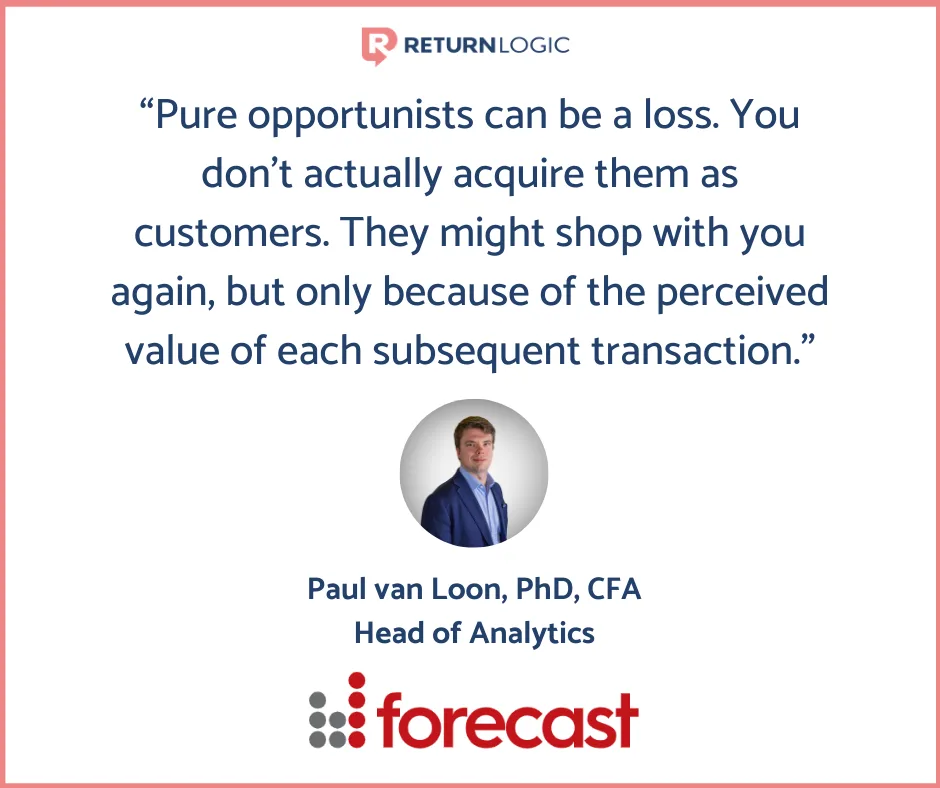
These opportunists are never truly your customers. The concept of CAC goes out the window – you will likely have to reinvest to see them again since you never established brand loyalty.
While opportunists are prime candidates for end-of-season sales, they embody the central risk of using discounts to acquire customers. They may not be the customers you want.
Conditioning and Brand Devaluation
As with any marketing tactic, discounts may condition shoppers in some way.
Discounting runs the risk of training shoppers to expect discounts, especially with new customers.

The key is to use discounts to reinforce positive, profitable behaviors. Customer loyalty isn’t bought – it’s earned.
Widespread discounts can even devalue your brand and diminish your customer lifetime value.
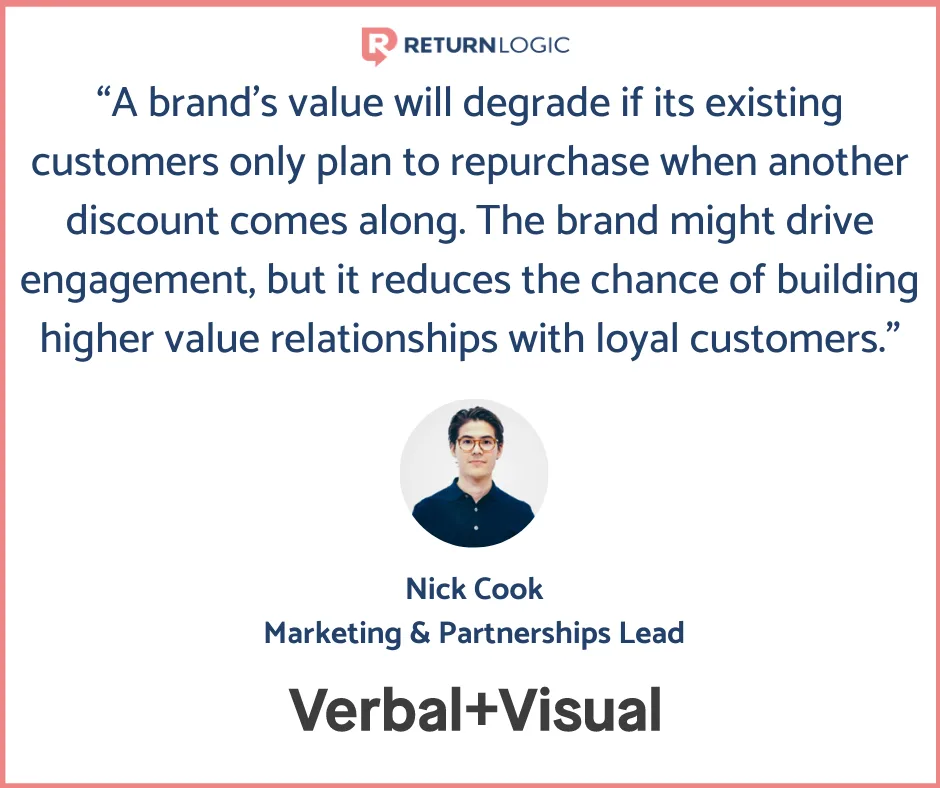
While discounting can be a helpful stepping stone to drive additional activity, don’t develop a dependency among shoppers.
Don’t offer discounts to our loyal customers if it isn’t necessary. If there’s a good chance that a shopper will purchase with or without a discount, then offering one will only diminish your profit margin.
Spiraling Effect
Discounts can have a spiraling effect on customer behavior when improperly used.
If you repeatedly condition shoppers with discounted pricing, they can become highly price-sensitive and may only respond to lower prices.
This issue can eventually lead to long-term revenue loss.
Be careful not to convert potential loyal shoppers into opportunists.
Quantifying the Impact of Discounts
So how are discounts impacting your profits and your customer lifetime value?
We must find ways to measure the short-term effect while also considering more long-term outcomes.
Measure Short-Term Lift
Examine the effect your campaigns have on sales most acutely.
Uplift modeling quantifies the impact of a treatment – such as a discount offer – by comparing those who received it to those who didn’t.
Let’s say we’re considering an on-page discount offer. We randomly give the offer to some visitors and not to others.
The outcome may look something like this: 9% of shoppers who received a discount made a purchase, whereas only 4% of those who didn’t receive a discount made a purchase. Therefore, the uplift of this offer was 5%.
It’s a highly simplified example. Nonetheless, it demonstrates that quantification, perhaps by uplift, is necessary to understand the impact of your campaigns.
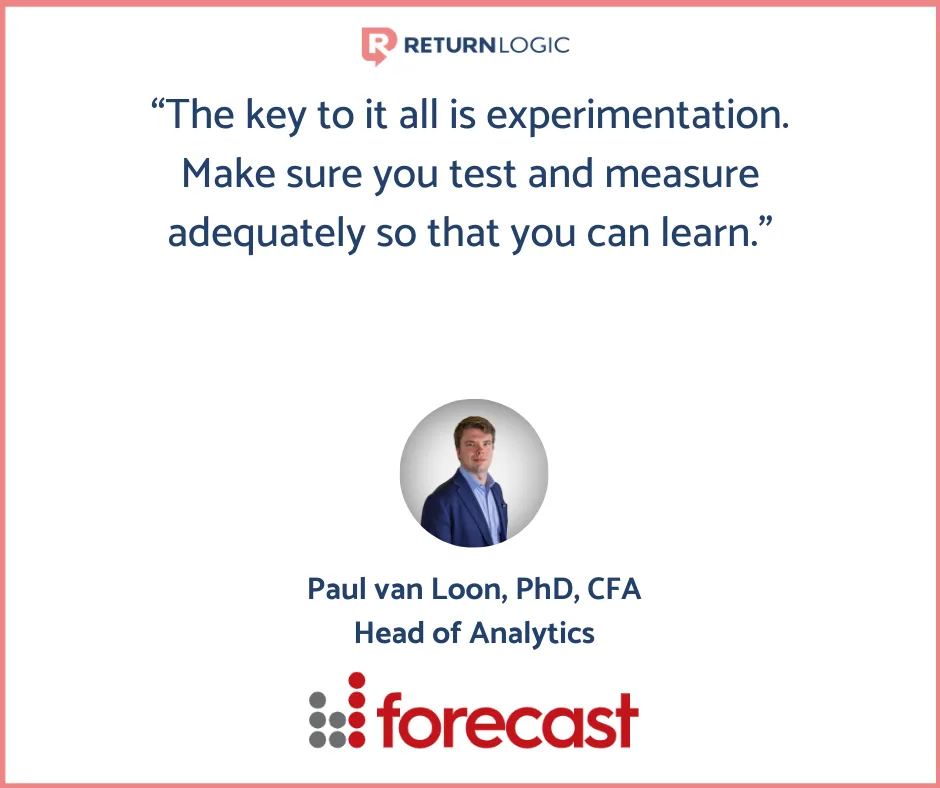
We could then expand the case to test different levels of discounts (such as 5% versus 10%), discount types (such as percentage discount versus BOGO deal), or even customer segments (such as new shoppers versus repeat customers).
We want to minimize discounts within reason. So, if you see that a 5% has roughly the same uplift as a 10% discount, 5% is the way to go.
Keep an Eye on Returns
Discounts can have some substantial and unexpected consequences on returns.
Let’s check out the return data of the same women’s fashion brand from earlier.
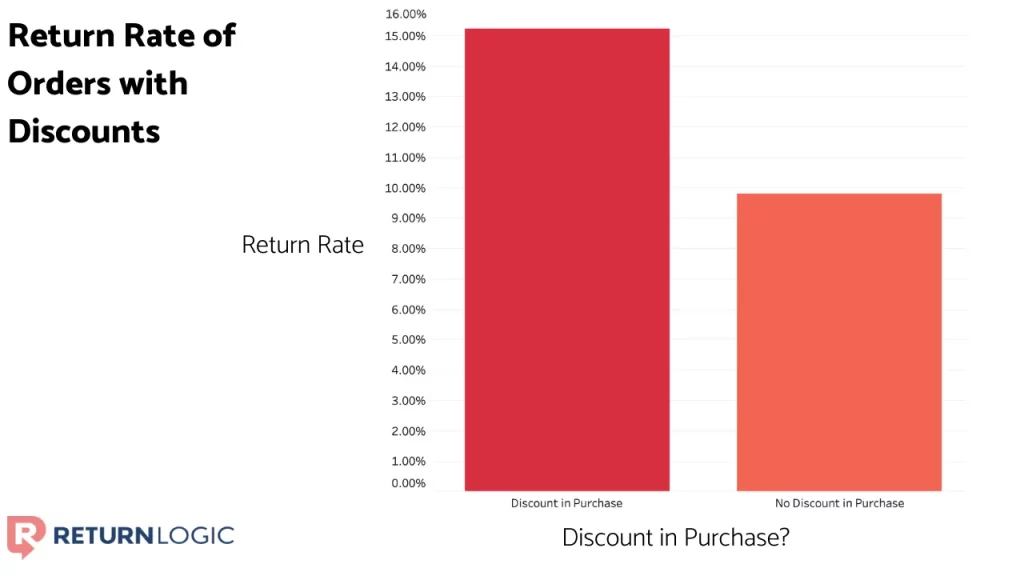
For this brand, it’s clear that discounted purchases have a return rate far greater than other purchases.
This trend makes sense – the purpose of discounting is to drive conversions. And some of those incremental conversions are bound to be impulse purchases.
As a result, discounted purchases are likely to cause more returns.
Consider Long-Term Effects
While lift should be the primary focus when evaluating discounts, it’s also vital to consider the long-term effects of campaigns.
Here’s a question you’ll want to answer: is there a difference in the lifetime value of customers acquired at a discount compared to those who were not?
The answer will vary by brand and vertical, but let’s look at the purchase data of the same women’s fashion brand as an example.
We’ll start by looking at the retention rates of shoppers acquired from a discount vs. those at full price.
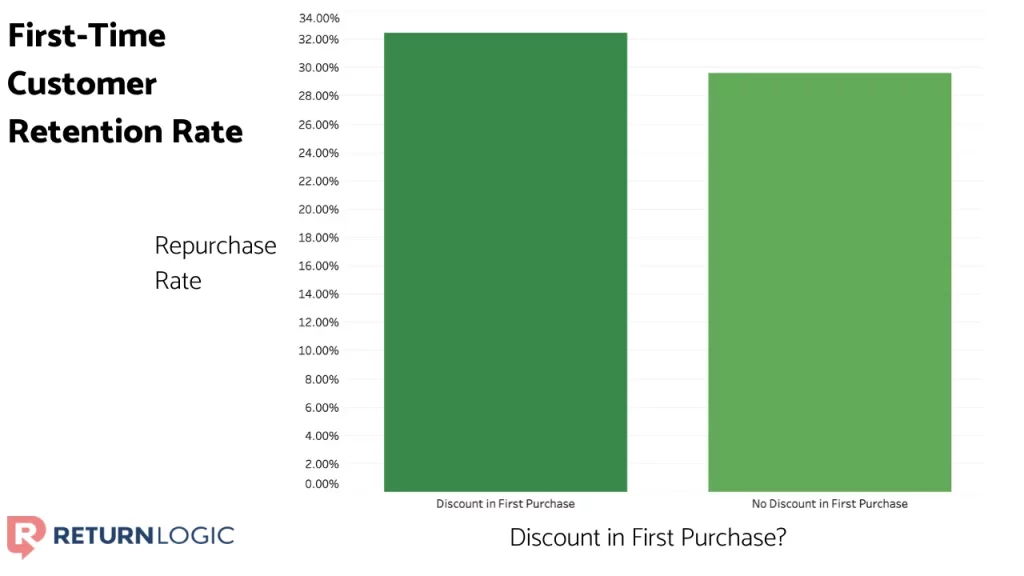
For this brand, it seems as though the presence of a discount in a shopper’s first purchase has no substantial impact on the likelihood of additional purchases.
If anything, customers who had a discount in their first transaction repurchased at a slightly higher rate.
We should also consider discounts on repeat purchases, however. Additional purchases will only provide a marginal source of profit if they also are made at a discount.
For this case, we’ll visualize the average percentage discount in repeat purchases by a categorical indicator of the percentage discount in the first purchase.
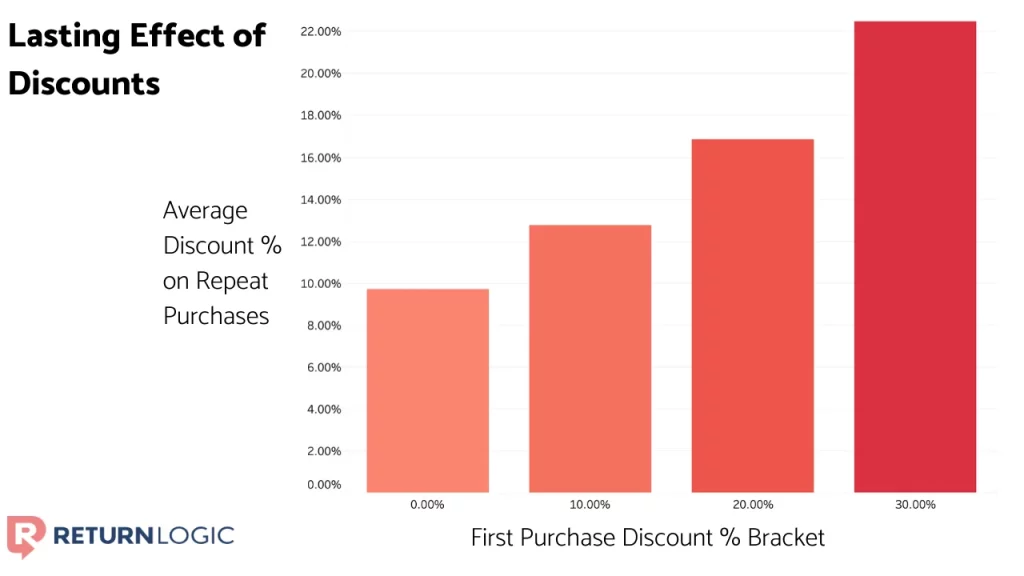
For this brand, we see that the greater the discount on a customer’s first purchase, the more discounts there will be in their repeat purchases.
Shoppers whose first purchase had a percentage discount between 20% and 30% exhibited a repeat purchase percentage discount almost double that of shoppers whose first purchase had less than a 10% discount.
These data support opportunist and conditioning notions: those who first purchase at a discount are more likely to buy again at a discount.
As a result, the future customer lifetime value of these shoppers diminishes. This factor could severely limit the brand’s ability to profit from repeat purchases from this customer.
It’s crucial to consider the long-term effects of discount campaigns, even though they’re much more complex to quantify than short-term impacts.
In Summary
Discounts have a variety of impacts on the customer lifetime value of your Shopify business.
We can’t simply assume the discount campaigns are profitable – you must test, measure, and learn to drive optimal results.
Discounts should drive profitable activity or behaviors such as signing up for a newsletter, joining and engaging on social media, or writing reviews.
A deep look into the use of discounts enables you to implement more profitable discount campaigns and encourage customer activities that drive growth now and in the future.






